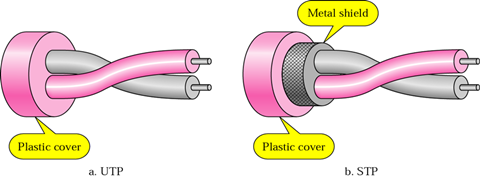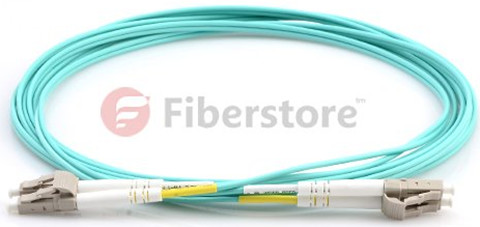Use Coaxial Cable, Twisted Pair Cable or Fiber Optic Cable for LAN?
by Fern Xu An English editorThe advancements of cable-based technologies have made wider accessibility to greater bandwidth possible in Local Area Network (LAN). With so many network options, to select a right cable-based solution for broadband connection services is a little confusing. When such factors as cost, speed, bandwidth and immunity are considered, which one is an ideal choice for networks, coaxial cable or twisted pair cable? Or is the fiber optic cable that meets your needs?
Coaxial Cable
Coaxial cable, or coax cable, is a single wire usually copper wrapped in a foam insulation, symmetrically surrounded by a woven braided metal shield, then covered in a plastic jacket. Because of its insulating property, coaxial cable can carry analogy signals with a wide range of frequencies. Thus it is widely used in feedlines connecting radio transmitters and receivers with their antennas, computer network connections, digital audio, and distributing cable television signals. The following figure shows the structure of coaxial cable.

Twisted Pair Cable
Twisted pair cable is a type of wiring in which two conductors of a single circuit are twisted together. It comes in two versions: Shielded Twisted Pair (STP) and Unshielded Twisted Pair (UTP). STP is commonly used in Token Ring networks and UTP is in Ethernet networks. For instance, Cat 7 twisted pair cables are used for 1000BASE-T (Gigabit Ethernet, or GbE) and 10GBASE-T (10-Gigabit Ethernet, or 10 GbE) networks. The picture below displays what UTP (left) and STP (right) look like.

Fiber Optic Cable
A fiber optic cable is a cable containing one or more optical fibers. Fiber optic cables often contain several silica cores, and each fiber can accommodate many wavelengths (or channels), allowing fiber to accommodate ever-increasing data capacity requirements. When terminated with LC/SC/ST/FC/MTRJ/MU/SMA connectors on both ends, such as LC-LC, LC-SC, LC-ST, SC-ST, SC-SC, ST-ST etc, fiber optic cables can achieve fiber link connection between equipment during fiber cabling. Take LC to LC fiber cable for example, it is often utilized for both short and long distance. The following image offers an overview of LC to LC fiber cable.

When selecting which kind of cable is appropriate for network services, one should keep in mind that each cable has its unique advantages and disadvantages concerning about these factors: cost, speed, security, reliability, bandwidth, data carrying-capacity, and so on.
Comparison of Three Kinds of Cables
Coaxial cable can be installed easily, relatively resistant to interference. However, it is bulky and just ideal for short length because of its high attenuation. It would be expensive over long-distance data transmission. By contrast, twisted pair cable is the most flexible and cheapest among three kinds of cables, easy to install and operate. But it also encounters attenuation problem and offers relatively low bandwidth. In addition, it is susceptible to interference and noises. As one of the most popular mediums for both new cabling installations and upgrades, including backbone, horizontal, and even desktop applications, fiber optic cable is small in size and light in weight. Because the conductor is glass which means that no electricity can flow through, fiber cable is immune to electromagnetic interference. The biggest advantage of fiber optic cable is that it can transmit a big amount of data with low loss at high speed over long distance. Nevertheless, it needs complicated installing skills, difficult to work with and expensive in the short run.
Choosing among coaxial cable, twisted pair cable and fiber optic cable depends on your needs. You can balance the cost and the requirements of bandwidth to make a choice. In Fiberstore, you can find twisted pair cables and a series of fiber optic cables. Other cables such as Category 5e, Category 6, Category 6A are also available for your copper networks. Certainly, bulk fiber cables of high quality are supplied at Fiberstore. You can visit Fiberstore for more information about cable-based solutions.
Originally published at www.fiberopticshare.com/use-coaxial-cable-twisted-pair-cable-or-fiber-optic-cable-for-lan.html
Sponsor Ads
Created on Dec 31st 1969 18:00. Viewed 0 times.
Comments
No comment, be the first to comment.



